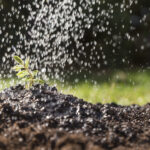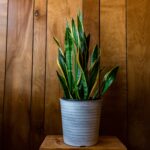Indoor plants add beauty and freshness to our homes, but they sometimes become targets for pests. If not taken care of, such small invaders could cause considerable harm. In this blog, you’ll learn how to understand the plant diseases that affect your plants, identify specific pests and apply practical remedies for maintaining a thriving garden indoors.
How Pests Affect Plants
The pests feed on the sap, leaves and roots of your plants which can damage their health. This is not just detrimental to the plants, but it also makes them susceptible to diseases. Insects may lead to symptoms such as stunted growth, discoloration of leaves and eventually plant death unless they are controlled.
Symptoms
Early detection of pest infestation is essential for the maintenance of healthy plants. Look out for the following signs and symptoms:
- Yellowing leaves: They are often caused by sap-sucking pests such as aphids and spider mites.
- Sticky Residue: A sugary substance called honeydew, which attracts ants, left by aphids and white flies.
- Discolored Spots: Brown or yellow spots may indicate the presence of spider mites or thrips.
- Root Rot: Root damage may be caused by pests, such as fungus gnats, which can cause the plant to rot.
- Holes in leaves: If you notice any holes in the leaf, it may be caused by a Caterpillar or snail.
Identifying Indoor Plant Pests
These are some common plant pests in the home:
- Aphids: Small, pear-shaped insects that cluster together on the new growth and the underside of the leaves.
- Spider mites: Tiny, often red or yellow insects that create fine webs between leaves.
- Fungus gnats: Small, black flies that hover over the surface of the soil; their larvae feed on plant roots.
- White flies: Tiny, white and moth like insects.
- Mealybug: Masses of white, cotton like material appear on stems and leaf joints.
Organic Home Remedies
Neem Oil
Spray Ingredients:
2 teaspoons of neem oil.
1 litre of water
1 teaspoon mild liquid soap.
Instructions:
Add neem oil and liquid soap to the water.
Add the mixture to a spray bottle and shake well.
Spray directly onto the affected areas including the undersides of leaves, every 7-10 days until pests are gone.
Insecticidal Soap
Ingredients:
1 teaspoon mild liquid dish soap
1 litre of water
Instructions:
In a spray bottle, mix the soap and water.
Spray the solution directly on the pests, focusing on areas where they are most concentrated.
Apply once a week until the infestation is under control.
Alcohol Wipes
Ingredients:
70% isopropyl alcohol
Cotton swabs
Instructions:
Put some alcohol on the cotton swab.
Gently remove mealybugs, scale insects, and other pests from the plant. To avoid recurrence cover all the areas that have been infected.
Baking Soda Spray
Ingredients:
1 teaspoon of baking soda
water1 litre
1 teaspoon of mild dish soap
Instructions:
Use water to dissolve baking soda and soap.
Pour the solution into a spray bottle and apply it to plants once a week to prevent fungal diseases and control pests.
Essential Oil Spray
Ingredients:
10 drops of peppermint essential oil
10 drops of rosemary essential oil
1 litre of water
Instructions:
In a spray bottle, combine the essential oils with water.
To repel insects such as aphids and spider mites, stir well and apply to the plant.
If necessary, apply it every few days.
FAQs
Is there a chemical pesticide that can be used indoors?
Due to potential health risks, it is best to avoid the use of chemical pesticides indoors.
What’s the number of times I’m supposed to check my plants for pests?
To detect the earliest signs of infestation, you should check your plants regularly.
Is there a risk of pest infestation due to over-watering?
Yes, excessive watering can result in conditions attracting pests such as fungus gnats.
Is it safe for all plants to use the Neem oil?
It is generally safe to use neem oil, but first, it must be tested on a small area because some plants may be sensitive.
Is it possible to use dish soap for insecticidal soap?
Yes, mild dish soap works well, but avoid those with strong detergents or additives.
In the future, what can I do to avoid pests?
To prevent pests, maintain the health of the plants, avoid over-watering, and keep the plants clean.
What’s to be done with the heavily infested plants?
To prevent the spread of the disease to others, isolate the heavily-infested plants immediately.
For indoor pests, are there any predators of nature?
Ladybugs can help, but they’re more suited to the open environment.
How much time does it take for the organic remedy to be effective?
It varies, but in a couple of weeks, you’ll start to see some improvement after applying it regularly.
Is it okay to mix multiple remedies?
In order not to stress the plant, adhere to one treatment at a time.
Conclusion
To maintain a pest-less indoor garden, it will be necessary to regularly inspect and properly identify the pests as well as consistent application of these solutions. Remember, if you want your plants to thrive in the indoor environment, a little care goes a long way.



Pingback: Tips for Home Gardening in Small Spaces for Beginners - Organic Kokan
Pingback: How to care for and grow a thriving String of Pearls plant indoors - Organic Kokan